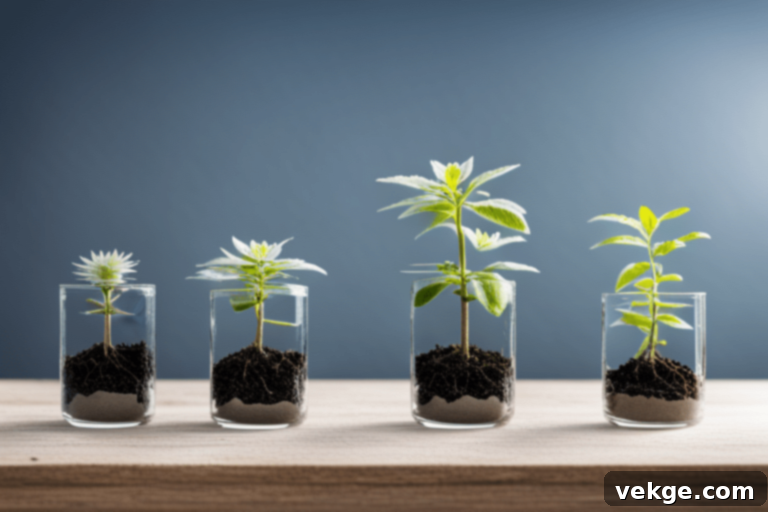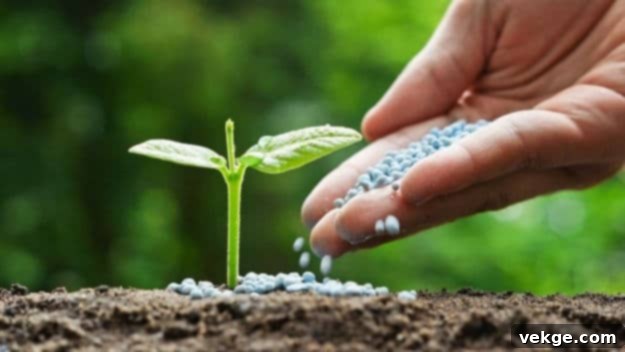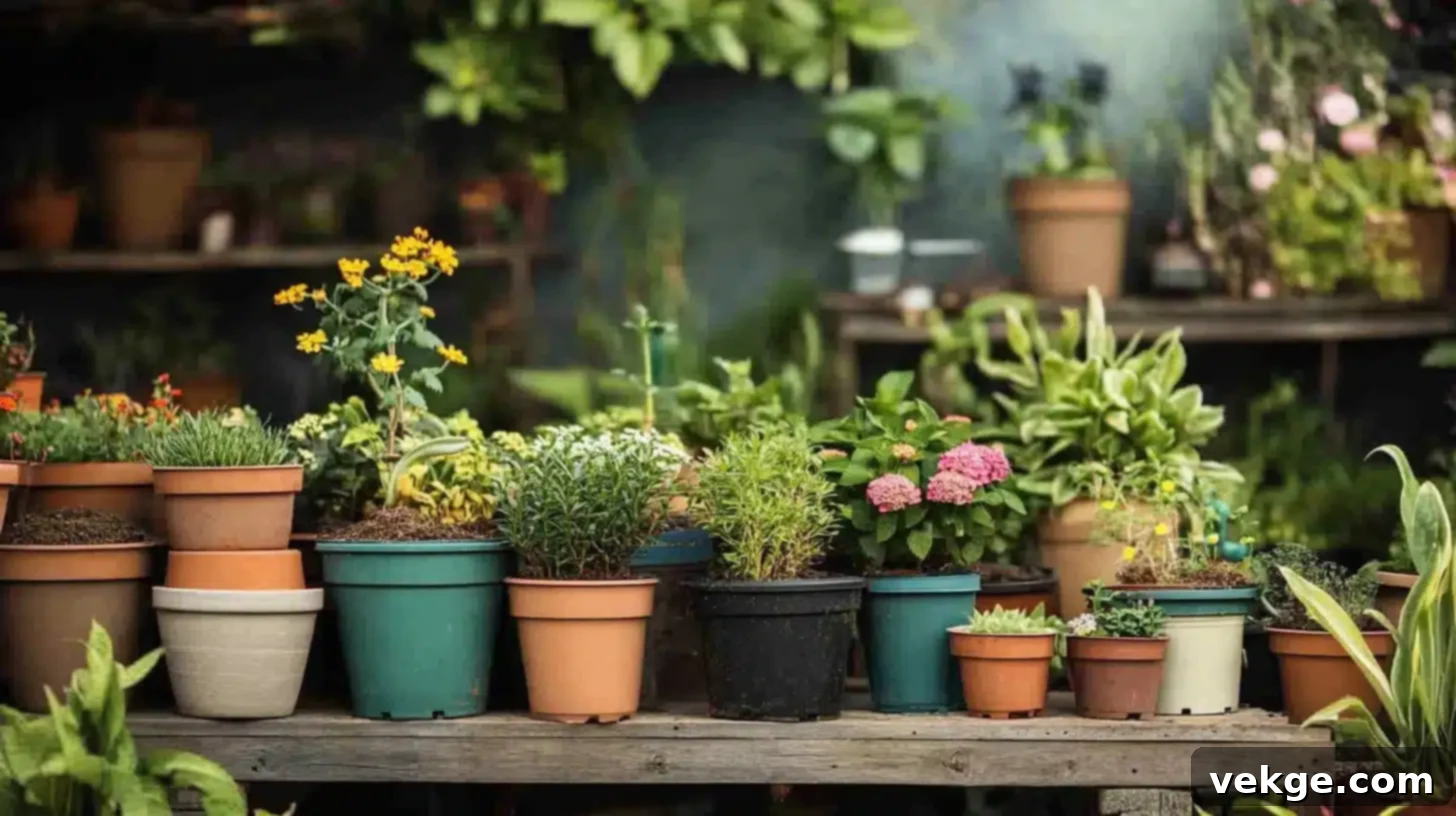Unlock Your Garden’s Potential: The Definitive Guide to Essential Garden Supplies
Cultivating a vibrant and flourishing garden is a deeply rewarding endeavor, a blend of art and science. It involves much more than simply planting seeds and hoping for the best. The secret to a thriving green space often lies in making informed choices about your garden supplies. From the foundational elements like soil and nutrients to the crucial tools and protective measures, each component plays an indispensable role in providing your plants with the ideal environment to grow, bloom, and prosper.
With an overwhelming array of products available, navigating the world of gardening essentials can feel daunting. How do you discern which items are truly beneficial for your specific plants and garden goals? This comprehensive guide is designed to empower you with the knowledge needed to select the perfect supplies, ensuring your garden reaches its fullest potential and becomes a source of enduring beauty and bounty.
1. Understanding Your Plants’ Unique Needs: The First Step to Success

Before you even consider purchasing a single item, the most critical step is to deeply understand the specific requirements of the plants you intend to grow. Just like people, different plants have distinct preferences and tolerances. A one-size-fits-all approach to gardening supplies often leads to disappointment and wasted effort.
Consider the natural habitat of your chosen plants. Are they sun-worshippers or shade-lovers? Do they thrive in consistently moist conditions or prefer well-drained, even dry, soil? These fundamental characteristics will dictate almost every subsequent decision about your garden setup.
Key Factors to Investigate for Each Plant:
- Sunlight Requirements: Full sun (6+ hours direct), partial sun (4-6 hours), partial shade (2-4 hours), or full shade (less than 2 hours). Positioning your plants correctly is paramount.
- Watering Needs: Determine if your plants prefer consistently moist soil, occasional deep watering, or if they are drought-tolerant. Overwatering is a common killer.
- Soil Preferences: Some plants need rich, organic soil, while others prefer sandy or even rocky conditions. Soil pH (acidity/alkalinity) is also crucial.
- Nutrient Demands: Fast-growing vegetables and heavy bloomers will generally require more frequent feeding than slow-growing ornamentals.
- Hardiness Zone & Climate: Ensure your chosen plants can tolerate your local climate’s average winter low temperatures and summer highs.
- Mature Size: Plan for the plant’s ultimate size to avoid overcrowding and ensure proper air circulation.
By diligently researching these needs for each plant variety in your garden, you lay a solid foundation for making informed decisions on soil types, fertilizers, watering strategies, and even the tools you’ll require.
2. The Foundation of Growth: Choosing the Right Soil and Amendments
Soil is far more than just dirt; it’s the living medium that anchors your plants, provides water, and delivers essential nutrients. The quality and composition of your soil will directly impact your plants’ health and vigor. Understanding different soil types and how to amend them is crucial for a productive garden.
Common Soil Types and Their Characteristics:
- Sandy Soil: Characterized by large particles, it drains exceptionally well but struggles to retain water and nutrients. Ideal for plants that prefer dry feet, like succulents, cacti, and some root vegetables.
- Clay Soil: Made of very fine, dense particles, clay soil holds water and nutrients effectively. However, it can become compacted, hindering root growth and drainage. Moisture-loving plants such as roses, willows, and some vegetables can thrive here with proper amendment.
- Silty Soil: With medium-sized particles, silt soil offers a good balance of water retention and drainage. It’s often fertile and easy to work with.
- Loamy Soil: Often considered the ‘gold standard’ for gardening, loamy soil is a balanced mix of sand, silt, and clay, enriched with organic matter. It boasts excellent drainage, aeration, and nutrient retention, making it suitable for a vast majority of garden plants.
Improving Your Soil: Amendments and pH
Few gardens start with perfect loamy soil. Fortunately, you can significantly improve your existing soil by incorporating amendments. Organic matter like compost, well-rotted manure, or leaf mold enhances soil structure, improves drainage in clay soils, and boosts water retention in sandy soils. For specific issues, consider:
- Perlite or Coarse Sand: To improve drainage in heavy clay soils.
- Vermiculite: To increase moisture and nutrient retention in sandy soils.
- Sphagnum Peat Moss: To increase acidity for acid-loving plants like blueberries and azaleas.
- Agricultural Lime: To increase alkalinity for plants that prefer less acidic conditions.
It’s also vital to test your soil’s pH level. A simple soil testing kit can reveal whether your soil is acidic, neutral, or alkaline, allowing you to adjust it to suit your plants’ specific needs. Most garden plants prefer a slightly acidic to neutral pH (6.0-7.0).
3. Fueling Growth: Selecting Quality Fertilizers and Nutrients

Even the best soil can sometimes lack sufficient nutrients to support vigorous plant growth. Fertilizers act as supplementary meals, providing the essential elements plants need to thrive. Choosing the right fertilizer depends heavily on your plants’ specific demands and the current nutrient profile of your soil.
Understanding N-P-K Ratios and Micronutrients:
Fertilizer packaging prominently displays three numbers, representing the N-P-K ratio: Nitrogen (N), Phosphorus (P), and Potassium (K). Each plays a distinct role:
- Nitrogen (N): Promotes lush, green foliage and strong stem growth. High-nitrogen fertilizers are ideal for leafy greens and lawns.
- Phosphorus (P): Essential for root development, flowering, and fruiting. Beneficial for blooming plants, fruit trees, and root vegetables.
- Potassium (K): Supports overall plant health, disease resistance, and water regulation. Important for all plants, especially those under stress.
Beyond N-P-K, plants also require micronutrients like calcium, magnesium, iron, and zinc. Many complete fertilizers include these, or you can address specific deficiencies with targeted supplements.
Organic vs. Synthetic Fertilizers:
- Organic Fertilizers: Derived from natural sources like compost, manure, bone meal, and fish emulsion. They release nutrients slowly, improve soil structure over time, and foster beneficial microbial activity. They are an excellent choice for long-term soil health.
- Synthetic Fertilizers: Chemically manufactured, these provide precise nutrient ratios and deliver quick results. However, they don’t contribute to soil structure and can, if overused, potentially harm beneficial soil organisms or lead to nutrient runoff.
When applying fertilizers, always follow the package instructions carefully. Over-fertilization can burn plants, leading to irreversible damage. It’s often better to under-fertilize slightly than to overdo it.
4. Empowering Your Green Thumb: Essential Gardening Tools
The right tools don’t just make gardening easier; they make it more efficient, more enjoyable, and ultimately, more successful. Investing in a few quality, ergonomic tools can transform your gardening experience, allowing you to perform tasks from planting to pruning with precision and comfort.
Indispensable Tools for Every Gardener:
- Hand Trowel: Your go-to for small digging tasks, planting seedlings, and transplanting. Look for a sturdy, stainless steel blade.
- Pruning Shears (Secateurs): Essential for trimming, shaping, and removing dead or diseased branches. Bypass pruners are best for living stems, while anvil pruners are good for deadwood.
- Garden Fork or Digging Fork: Ideal for turning and aerating compacted soil, breaking up clumps, and incorporating amendments.
- Spade or Shovel: For larger digging tasks, moving soil, and preparing beds. A sharp, strong blade is key.
- Garden Gloves: Protect your hands from thorns, dirt, and blisters. Choose durable, comfortable, and water-resistant options.
- Watering Can or Hose with Adjustable Nozzle: Ensures targeted and controlled watering. An adjustable nozzle offers versatility for different watering needs.
- Wheelbarrow or Garden Cart: Invaluable for transporting soil, compost, tools, and harvested produce around the garden with ease.
- Hand Weeder: A small, specialized tool designed for efficiently removing stubborn weeds without disturbing nearby plants.
- Kneeling Pad or Garden Seat: Saves your knees and back during prolonged weeding or planting sessions.
When selecting tools, prioritize comfort, durability, and ease of maintenance. Stainless steel offers longevity and rust resistance, while ergonomic handles reduce strain. Remember to clean and sharpen your tools regularly to extend their lifespan and ensure optimal performance.
5. The Lifeline of Your Garden: Effective Watering Systems
Water is the lifeblood of your garden, but “how” and “how much” you water can be as important as the water itself. Different plants have varying hydration needs, and an efficient watering system ensures consistent moisture without wastage or over-saturation, preventing common plant problems like root rot or drought stress.
Options for Smart Watering:
- Manual Watering (Hose & Watering Can): Offers precise control, allowing you to tailor water delivery to individual plants. Best for small gardens, containers, or plants with very specific needs. Water deeply and less frequently to encourage strong root growth.
- Drip Irrigation Systems: Highly efficient, these systems deliver water slowly and directly to the plant’s root zone, minimizing evaporation and runoff. They are excellent for water conservation and consistent moisture, especially in vegetable gardens or perennial beds.
- Soaker Hoses: A simpler form of drip irrigation, these porous hoses slowly weep water along their entire length, ideal for rows of plants or dense beds.
- Sprinkler Systems: Best suited for large lawns or extensive garden areas where overhead watering is acceptable. Not ideal for plants that are susceptible to fungal diseases when their foliage stays wet (e.g., tomatoes).
- Smart Watering Systems & Timers: Integrate technology to automate watering schedules, sometimes even adjusting based on local weather forecasts or soil moisture sensors. These can prevent both over- and under-watering.
- Rain Barrels: A sustainable option for collecting rainwater, which is often superior to tap water for plants due as it’s free of chlorine and other chemicals.
Aim to water in the early morning to reduce evaporation and allow foliage to dry before nightfall, which helps prevent fungal diseases. Consider using a moisture meter to gauge soil hydration accurately, taking the guesswork out of watering schedules.
6. The Protective Layer: Mulch for Optimal Garden Health
Mulch is one of the gardener’s best friends, offering a multitude of benefits that contribute significantly to plant health and garden maintenance. Applying a layer of mulch is a simple yet effective strategy to conserve water, suppress weeds, and regulate soil temperature.
Key Benefits of Mulch:
- Moisture Retention: A layer of mulch acts as a barrier, significantly reducing water evaporation from the soil, meaning you’ll need to water less frequently.
- Weed Suppression: Mulch blocks sunlight from reaching weed seeds, dramatically decreasing weed germination and growth. Those that do sprout are usually easier to pull.
- Temperature Regulation: Mulch insulates the soil, keeping it cooler in summer and warmer in winter, protecting plant roots from extreme temperature fluctuations.
- Soil Enrichment: Organic mulches (like wood chips, straw, or compost) decompose over time, adding valuable organic matter and nutrients back into the soil, improving its structure and fertility.
- Erosion Control: Mulch helps prevent soil erosion from wind and heavy rain.
- Aesthetic Appeal: A neat layer of mulch provides a clean, finished look to your garden beds.
Types of Mulch:
- Organic Mulches:
- Wood Chips/Shredded Bark: Long-lasting, excellent for trees, shrubs, and perennial beds.
- Straw: Ideal for vegetable gardens, very good for moisture retention and insulation.
- Compost: Adds rich nutrients, improves soil structure, but decomposes faster.
- Shredded Leaves: Free, excellent for soil building as they decompose.
- Pine Needles: Great for acid-loving plants.
- Inorganic Mulches:
- Gravel/Pebbles: Durable, good for rock gardens or drought-tolerant plants, but don’t add nutrients.
- Landscape Fabric: Provides good weed control but doesn’t enrich the soil and can hinder water penetration over time.
Apply mulch 2-4 inches deep, ensuring it doesn’t touch plant stems or tree trunks directly (leave a small gap) to prevent rot and pest issues.
7. Safeguarding Your Sanctuary: Integrated Pest and Disease Management
No garden is immune to pests and diseases, but effective management is key to maintaining healthy plants. The goal isn’t necessarily to eradicate every single bug, but to keep populations at bay and prevent widespread damage. An integrated pest management (IPM) approach emphasizes prevention and environmentally friendly solutions first.
Core Principles of Integrated Pest Management (IPM):
- Prevention: Start with healthy plants. Choose pest and disease-resistant varieties. Practice good sanitation (clean tools, remove diseased plant material). Ensure proper spacing for air circulation.
- Identification: Accurately identify the pest or disease before acting. Not all insects are harmful; many are beneficial predators.
- Monitoring: Regularly inspect your plants for early signs of trouble. Catching problems early makes them easier to manage.
- Least Toxic Solutions First: Start with non-chemical methods before resorting to stronger measures.
Environmentally Friendly Pest and Disease Control Solutions:
- Hand-Picking: For larger pests like slugs, snails, and caterpillars, simply pick them off and dispose of them.
- Hosing Off: A strong spray of water can dislodge aphids and spider mites from plant foliage.
- Beneficial Insects: Introduce or encourage natural predators like ladybugs, lacewings, and parasitic wasps, which feed on common garden pests.
- Companion Planting: Some plants naturally repel pests or attract beneficial insects (e.g., marigolds deter nematodes, dill attracts predatory wasps).
- Organic Sprays:
- Neem Oil: A natural insecticide and fungicide that disrupts pest life cycles.
- Insecticidal Soap: Effectively kills soft-bodied insects like aphids and whiteflies upon contact.
- Horticultural Oils: Suffocate overwintering pests and their eggs.
- Physical Barriers: Use row covers to protect young plants from flying insects. Copper tape can deter slugs and snails.
- Disease Management: Focus on prevention through good air circulation, proper watering, and removing affected plant parts immediately. Fungicides (organic or synthetic) can be used for persistent fungal issues.
Always read product labels carefully and apply any treatments at the recommended times and concentrations. Remember, a balanced ecosystem in your garden is your best defense against overwhelming pest and disease problems.
Cultivate Success: Choose the Right Garden Supplies for a Thriving Oasis
Embarking on a gardening journey is a fulfilling experience, and equipping yourself with the right knowledge and essential garden supplies is the bedrock of success. By diligently understanding your plants’ unique requirements, carefully selecting appropriate soil and amendments, providing optimal nutrition with quality fertilizers, utilizing effective tools, implementing smart watering strategies, benefiting from the protective layer of mulch, and employing thoughtful pest and disease management, you create an environment where your plants don’t just survive, but truly thrive.
Remember, gardening is an ongoing learning process. Each season offers new insights and opportunities to refine your approach. By making informed choices about your garden supplies, you invest not only in the health and beauty of your plants but also in the joy and satisfaction that comes from nurturing a vibrant, productive, and harmonious green space. Step into your garden with confidence, armed with the best supplies, and watch your dreams blossom into reality.
